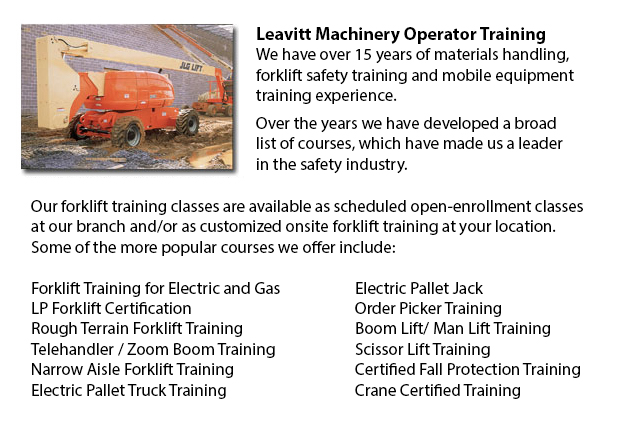
Boom Lift Safey Training Tukwila - Boom lifts are a kind of elevated work platform or aerial lifting device which are normally utilized in warehousing, construction and industry. Boom lifts can be made use of in virtually whichever setting because of their versatility.
Elevated work platforms enable workers to access work places which will be inaccessible otherwise. There is inherent risk in the operation of these devices. Employees who operate them have to be trained in the right operating procedures. Preventing accidents is vital.
The safety aspects that are included in boom lift operation are covered in our Boom Lift Training Programs. The course is suitable for individuals who operate self-propelled elevated work platforms and self-propelled boom supported elevated work platforms. Upon successful completion of the course, People who participated would be issued a certificate by somebody certified to confirm the completion of a hands-on evaluation.
To be able to help train operators in the safe utilization of elevated work platforms, industry agencies, federal and local regulators, and lift manufacturers all play a part in providing the necessary information and establishing standards. The most essential ways in avoiding accidents related to the utilization of elevated work platforms are the following: conducting site assessments; checking machinery; and wearing safety gear.
Important safety factors when operating Boom lifts:
Operators stay away from power line, observing the minimum safe approach distance (or also known as MSAD). Voltage can arc across the air to find an easy path to ground.
In order to maintain stability when the platform nears the ground, a telescopic boom should be retracted prior to lowering a work platform.
Boom lift workers should tie off to ensure their safety. The lanyard and safety tools have to be attached to manufacturer provided anchorage, and never to other wires or poles. Tying off may or may not be needed in scissor lifts, which depends on specific job risks, local rules, or employer guidelines.
The maximum slope will be specified by the manufacturer. Workers must avoid working on a slope, whenever possible. When the slope exceeds recommended situation, the lifting device should be winched or transported over the slope. A grade could be measured simply by laying a minimum 3-feet long straight edge or board on the slope. Afterward a carpenter's level could be laid on the straight edge and the end raised until it is level. The percent slope is attained by measuring the distance to the ground (the rise) and then dividing the rise by the length of the straight edge. After that multiply by one hundred.
-
Forklift Train The Trainer Tukwila
Forklift Train The Trainer Tukwila - We provide amongst the best Forklift Training programs within North America, using the latest and most advanced training techniques. Amongst our training courses are Train the Trainer courses, mobile equipment ope... More -
Crane Certification Tukwila
Crane Certification Tukwila - The Crane Certification training program covers content suggested by industry concerning the safe and efficient operation of cranes. People training will learn the following: pre-operational, operational and post operati... More -
Manlift Safety Training Tukwila
Manlift Safety Training Tukwila - It is vital for competent Manlift operators to be aware of the associated dangers which come with specific types of scissor lifts. They need to be able to operate the scissor lift in a way which protects not just the... More -
Scissor Lift Training Tukwila
Scissor Lift Training Tukwila - While operating a scissor lift, they must be utilized proficiently so as to protect the safety of the other personnel in the workplace and to protect the safety of the machine. Skilled operators are trained to drive th... More -
Crane Operator Certification Tukwila
Crane Operator Certification Tukwila - Crane Operator Certification is a process which permits people to earn a certificate to operate certain kinds of cranes. Certification includes classroom learning, hands-on practice and an ability evaluation. Se... More -
Forklift Operator Certification Tukwila
Forklift Operator Certification Tukwila - Certification for forklifts are required to guarantee the safe utilization of forklifts for those employers in construction, industrial and warehouse environments. The training has to include a method of educ... More -
Boom Lift Ticket Tukwila
Boom Lift Ticket Tukwila - Boom Lifts are a platform lift apparatus which can be raised or lowered to differing heights, making this apparatus a useful tool for various manufacturing uses. There are many distinctive types of Boom Lift consisting of k... More -
Bucket Truck Training Tukwila
Bucket Truck Training Tukwila - The bucket truck training program is a program that is designed to efficiently train qualified operators so they could lessen the chance of personal injury and incident when working in close proximity to or with bucket... More

Forklift Training Tukwila
TOLL FREE: 1-888-254-6157
Tukwila, Washington
forklifttrainingtukwila.com
Email Us
About Us


